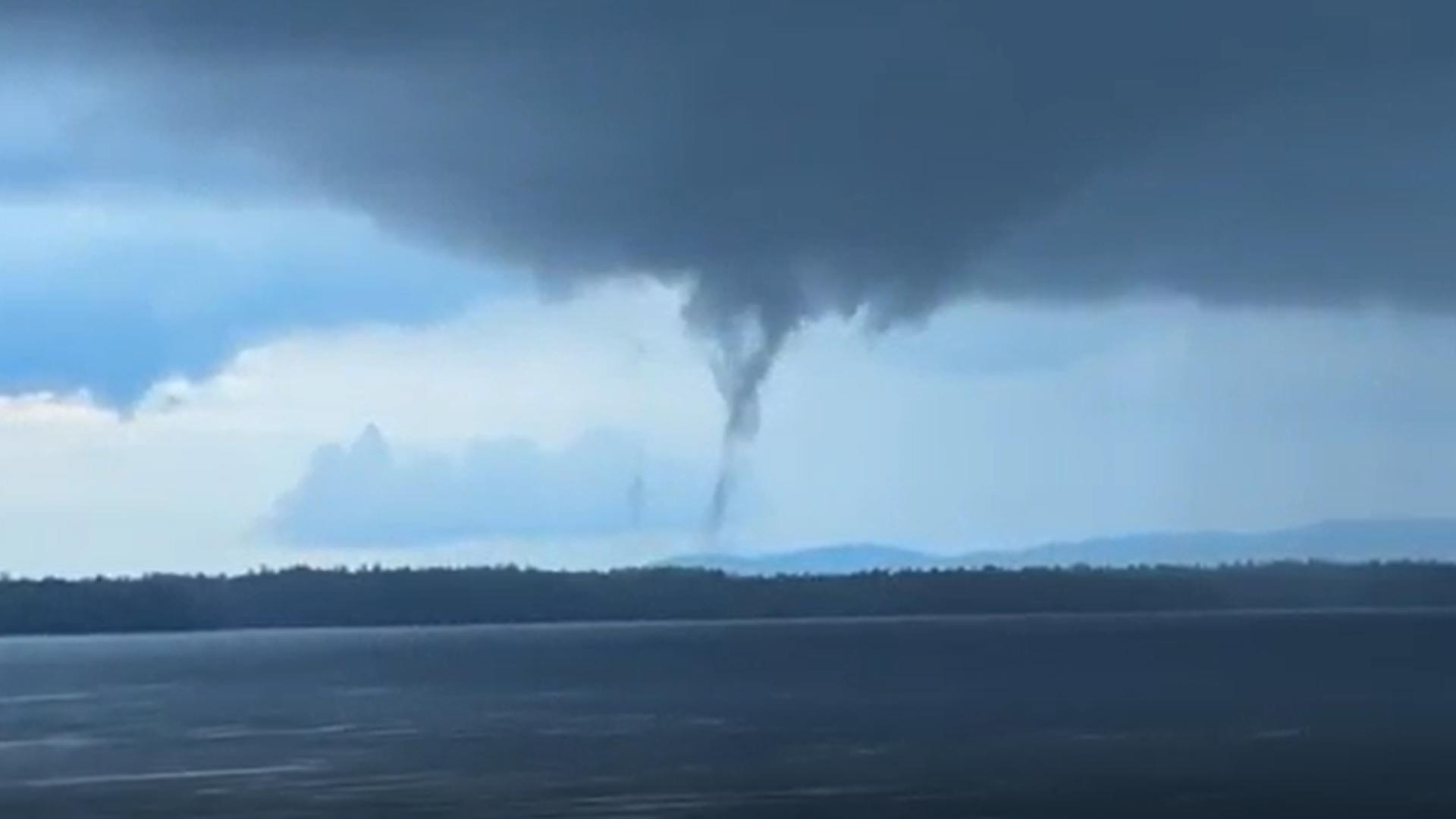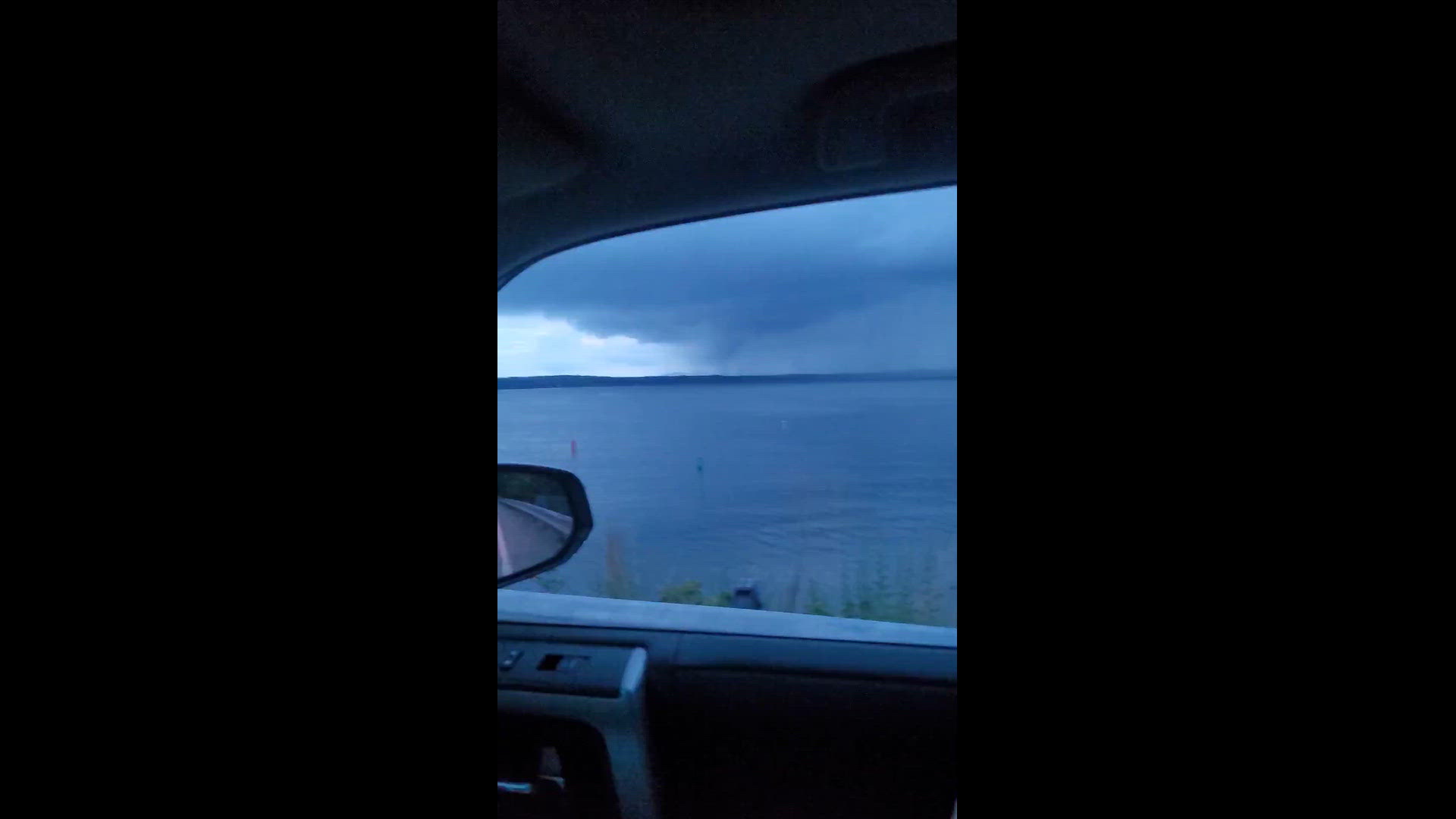SEBAGO, Maine — NEWS CENTER Maine received several videos from viewers about a possible waterspout tornado over Sebago Lake Tuesday night. This launched a mini investigation by the weather team and National Weather Service meteorologists in an effort to figure out what we were seeing.
The Sebago Lake region is a hot-spot for tornado activity in Maine. It is in the "perfect" location of being far enough away from stable marine air along the coast, and the convergence of a late day sea breeze and thunderstorms moving in from the west. That combination creates a low level shear, which is helpful when creating tornadoes.
Initially, we thought this might be something called "scud." Scud refers to fragments of clouds that hang off the base of a larger cloud. They can look like funnel clouds and are often confused for them. However, scud does not cause severe weather. There was a lot of other clouds with scud in the area, so that was a possibility.
Then, we saw a video that featured rotation. Scud doesn't rotate, so that left us thinking that it was a funnel cloud or a true waterspout.
There are two types of waterspouts. Fair-weather waterspouts can occur along a line of cumulous clouds over water—think of them like a dust devil over water. The other is tornadic waterspouts, which form from severe weather over water. The radar did not show any velocity signature present that we would typically see with severe storms. There were showers around, but they were not very strong cells.
This led us to the conclusion that this was likely a waterspout. The NWS did not receive any reports of damage in the area, so we can't confirm if the funnel cloud actually reached the lake surface, or if it touched the surface but never left the water.
Regardless, it was very interesting to investigate!
Dana



